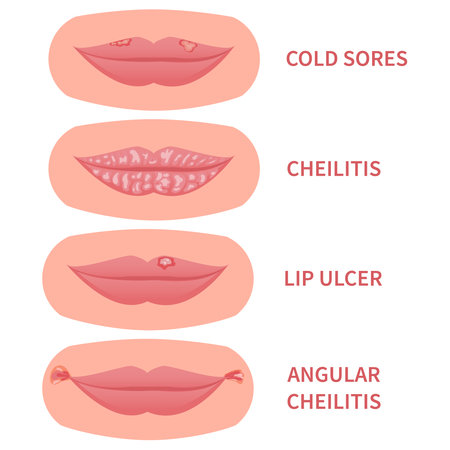Understanding Hyperpigmentation: A British Perspective
Hyperpigmentation, a common dermatological concern in the UK, manifests in various forms and affects a broad spectrum of the population. In Britain, its prevalence is influenced by a unique interplay of ethnicity, climate, and lifestyle factors. While post-inflammatory hyperpigmentation and melasma are observed across all demographics, individuals with darker skin tones—prevalent within multicultural urban centres—are more susceptible due to higher baseline melanin levels. The UKs variable climate, characterised by intermittent sunshine and frequent overcast conditions, often leads to inconsistent sun protection habits. This irregular UV exposure can exacerbate pigmentary disorders, especially among those unaware of the necessity for daily sunscreen application regardless of weather. Furthermore, lifestyle factors such as increased urban pollution, dietary patterns high in processed foods, and stress are emerging contributors to pigmentation issues among Britons. British aesthetic experts underscore the importance of a tailored approach that recognises these region-specific triggers and demographic nuances when addressing hyperpigmentation.
2. Key Ingredients Proven for Pigmentation Management
British aesthetic experts consistently emphasise the importance of clinically-evidenced actives when customising skincare regimens for hyperpigmentation. The UK’s regulatory framework and consumer expectations around efficacy and safety shape ingredient preferences and sourcing practices across both clinics and retail environments. Below, we examine the most endorsed ingredients, how they are sourced within the UK market, and what makes them stand out in pigmentation management protocols.
Clinically-Evidenced Actives Preferred by British Experts
| Ingredient | Mechanism of Action | UK Regulatory Status | Typical Usage Forms |
|---|---|---|---|
| Niacinamide (Vitamin B3) | Inhibits melanosome transfer; anti-inflammatory | Widely approved in leave-on products up to 10% | Serums, moisturisers, targeted treatments |
| Vitamin C (Ascorbic Acid & Derivatives) | Antioxidant; inhibits tyrosinase; brightening effect | Permitted in various concentrations; stability important | Serums, creams, boosters |
| Azelaic Acid | Normalises keratinisation; inhibits melanin production | Medicinal (15-20%) & cosmetic (<10%) applications | Creams, gels, prescription formulas |
Sourcing and Regulatory Compliance in the UK Market
British practitioners prioritise products that comply with the UK Cosmetic Products Regulation (Schedule 34 of the Product Safety and Metrology etc. (Amendment etc.) (EU Exit) Regulations 2019), ensuring all actives meet strict safety and labelling requirements. Preference is given to reputable brands—often UK- or EU-manufactured—that provide transparent clinical data supporting their claims. For prescription-strength ingredients such as higher-concentration azelaic acid, clinicians follow NHS or private prescribing pathways, while over-the-counter formulations are sourced from regulated pharmacies or professional distributors.
Efficacy Backed by Local Clinical Practice
The integration of these ingredients into bespoke regimens reflects a uniquely British approach: balancing evidence-based efficacy with patient safety and robust product provenance. This strategic selection ensures that clients benefit from cutting-edge pigment-correcting science without compromising on regulatory compliance or cultural expectations for gentle yet effective results.
![]()
3. Tailoring Skincare Regimens to British Skin Types
When customising skincare routines for hyperpigmentation, it is essential to recognise the diversity of skin phototypes and sensitivities found across the UK population. British aesthetic experts highlight that effective regimens must be attuned to both genetic and environmental factors unique to this region.
Understanding UK Skin Phototypes
Britain is home to a wide spectrum of skin tones, from fair Fitzpatrick Type I, which is prone to redness and sun damage, through to darker phototypes with increased melanin production. Each type responds differently to pigmentation triggers and treatment actives, necessitating nuanced product selection and usage frequencies.
Sensitivities Common in British Skin
The UKs temperate climate often results in heightened skin sensitivity, exacerbated by central heating and fluctuating humidity levels. Many individuals report issues such as rosacea, eczema, or general reactivity. Therefore, expert recommendations emphasise gentle exfoliants—such as polyhydroxy acids (PHAs)—and barrier-supportive ingredients like ceramides and squalane to mitigate irritation while addressing pigmentation.
Targeted Approaches for Hyperpigmentation
British specialists advise layering products strategically: starting with a mild cleanser, followed by a hydrating antioxidant serum containing niacinamide or vitamin C. Prescription-strength actives such as azelaic acid or retinoids may be introduced gradually for those with resilient skin types. Sun protection remains critical year-round; broad-spectrum SPF not only guards against UV-induced pigmentation but also shields against visible light, increasingly relevant due to the UKs variable weather patterns.
Ultimately, personalisation is key—routine efficacy hinges on regular assessment and adaptation based on individual response and seasonal changes. By focusing on gentle yet scientifically validated interventions, practitioners ensure safe and meaningful progress towards even-toned skin for all British phototypes.
4. In-Clinic Expertise: Integrating Professional Treatments
For individuals experiencing persistent or severe hyperpigmentation, British aesthetic experts often recommend considering clinic-based interventions as a strategic component of a comprehensive skincare regimen. While over-the-counter products and at-home routines can be effective for mild cases, in-clinic treatments offer targeted solutions for more complex pigmentation concerns. These interventions are carefully selected based on the patient’s skin type, pigmentation severity, and overall health profile.
When to Consider In-Clinic Interventions
Professional treatments become particularly relevant under the following circumstances:
Clinical Scenario |
Recommended Action |
|---|---|
| Stubborn pigmentation unresponsive to topical agents | Consult a qualified practitioner for advanced therapies |
| Post-inflammatory hyperpigmentation following acne or injury | Assess suitability for peels or laser procedures |
| Pigmentary disorders with underlying medical conditions | Multidisciplinary approach involving dermatology input |
| Desire for accelerated results within a safe, regulated environment | Explore professional-grade options under expert supervision |
Common In-Clinic Treatment Modalities in the UK
British practitioners frequently employ a range of evidence-based techniques, including:
- Chemical Peels: Utilising glycolic acid, salicylic acid, or trichloroacetic acid (TCA) to exfoliate pigmented skin layers and stimulate cell turnover.
- Laser Therapy: Devices such as Q-switched Nd:YAG lasers target melanin clusters with precision, offering controlled pigment reduction with minimal downtime.
- Microneedling: Often combined with topical actives to enhance penetration and facilitate collagen remodelling.
- Intense Pulsed Light (IPL): Suitable for select cases where photorejuvenation is indicated.
The British Approach: Holistic Integration into Regimens
Aesthetic experts across the UK emphasise the importance of integrating in-clinic treatments into a broader, holistic regimen rather than viewing them as standalone solutions. The process typically involves:
- Pre-Treatment Preparation: Stabilising the skin barrier with gentle cleansers and antioxidants, while minimising sun exposure.
- Treatment Customisation: Selecting modalities tailored to Fitzpatrick skin type and lifestyle considerations unique to the British climate.
- Post-Treatment Aftercare: Implementing soothing serums, strict photoprotection, and ongoing professional monitoring to mitigate relapse risks.
- Long-Term Maintenance: Blending clinical interventions with home-based regimens for sustained results, adjusting protocols seasonally as needed.
Navigating Regulation and Patient Safety in the UK
The UK’s regulatory landscape prioritises patient safety by mandating that advanced treatments are performed by qualified professionals within registered clinics. This ensures both efficacy and minimises adverse effects—an essential consideration when dealing with complex skin presentations commonly seen in multicultural British populations.
5. Seasonal and Environmental Considerations in the UK
When customising skincare regimens for hyperpigmentation, British aesthetic experts place significant emphasis on understanding the unique seasonal and environmental factors present in the UK. The region’s notoriously variable climate, characterised by frequent overcast skies and prolonged periods of low sunlight during autumn and winter, can sometimes lead clients to underestimate the risk of UV-induced pigmentation. However, ultraviolet (UV) exposure remains a year-round concern, as UVA rays, which penetrate cloud cover and glass, are known to exacerbate hyperpigmentation regardless of visible sunlight.
British practitioners also account for the country’s rising urban pollution levels, particularly in metropolitan areas such as London and Manchester. Pollutants like particulate matter and nitrogen dioxide can trigger oxidative stress within the skin, contributing not only to premature ageing but also to the deepening of existing pigmentary changes. As a result, experts often recommend incorporating antioxidant-rich serums and barrier-repairing moisturisers into bespoke routines for individuals at heightened risk.
Seasonal humidity fluctuations are another key consideration. The damp winters may reduce transepidermal water loss but can also heighten skin sensitivity due to cold winds and central heating, necessitating gentle formulations and enhanced hydration strategies. Conversely, during warmer months, an uptick in outdoor activity coincides with increased UV exposure—even if temperatures are mild—prompting practitioners to stress daily broad-spectrum sunscreen application tailored to local lifestyle patterns.
Ultimately, British aesthetic professionals advocate for dynamic skincare regimens that evolve throughout the year. Personalised advice might include switching to lighter antioxidant products in summer or prioritising lipid-rich emollients in winter while maintaining rigorous photoprotection. This nuanced approach helps mitigate environmental triggers of hyperpigmentation and supports optimal clinical outcomes for clients across the UK.
6. Patient Education and Ongoing Support
Enhancing Patient Compliance Through Education
British aesthetic experts emphasise that effective management of hyperpigmentation hinges on robust patient education. Clinicians routinely invest time in explaining the science behind pigmentary disorders, demystifying complex terms, and providing clear guidance on the use of prescribed products. By adopting a patient-centric communication style—often using analogies relatable to British daily life—they ensure individuals understand why consistency is key and how each step in their regimen contributes to visible results.
Setting Realistic Expectations with a Transparent Approach
Managing expectations is fundamental to achieving patient satisfaction in the UK. British practitioners are known for their pragmatic approach; they openly discuss the timeline for improvement, potential side effects, and possible setbacks. This transparency fosters trust and minimises the risk of disappointment. Experts often employ visual aids or before-and-after images from local case studies, further contextualising what can be realistically achieved within a typical British lifestyle and climate.
Leveraging Digital Tools for Long-Term Success
The integration of digital health platforms has transformed aftercare and follow-up in UK clinics. Many experts utilise secure patient portals, apps, and messaging services to offer ongoing advice, send appointment reminders, and provide educational resources tailored to each patient’s journey. Video consultations have become increasingly popular, especially for those outside major cities, ensuring continued support without geographical barriers. These technologies not only bolster adherence but also facilitate early intervention should issues arise.
A Collaborative Model Rooted in Local Expertise
Ultimately, British experts champion a collaborative model where patients are partners in their own care. By combining personalised education, realistic goal-setting, and digital engagement strategies, they maximise both short-term compliance and long-term skin health outcomes for individuals managing hyperpigmentation across the UK.

